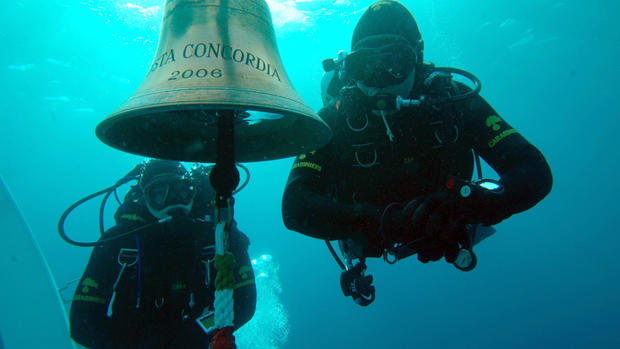How do you clean up a wrecked cruise liner?
The owners of the Cost Concordia cruise ship, grounded six days ago off Tuscany, have hired a salvage company to remove 2,400 tons of fuel from the cruise liner's tanks. They're trying to avoid a damaging oil spill -- but then what?
At nearly 1,000 feet long, 123 feet across and weighing in at 112,000 tons, getting the Costa Concordia unstuck from the coastline of Italy's Giglio island will be one of the biggest removal jobs in maritime history.
But the big question - which may take weeks to answer - is what kind of operation this will be; one to save the ship, or one to scrap it. Either way, it's a huge job.
Cruise ship search resumes; 21 still missing
Video: Hope of finding cruise ship survivors fades
Report: Cap't claims he tripped into lifeboat
Arnold Witte, President and CEO of Don Jon Marine, has worked in the salvage business for more than 50 years. His company was called in when a freighter crashed into the Rock of Gibraltar, broke in two and sank, and when a Dutch cargo ship ran aground and rolled on its side in Albany, New York, and when a barge went down in Narragansett Bay. But he tells "CBS This Morning" that saving the Concordia will be a unique challenge.
"If you look at a passenger ship, most of it is out of the water," explains Witte. "If you look at a freighter most of it is in the water. That affects the stability. The more out of the water, the more unstable the ship is."
Walking past his company's massive cranes and barges in the Port of Newark, Witte explained what the process of saving the Concordia might look like.
The first step will be removing as much fuel as possible from the ship's tanks. Pumps attached to a barge will likely be used to siphon the gasoline out and prevent it from spilling into the pristine Mediterranean waters.
The massive hole in the hull - which still has a massive chunk of rock lodged into it - will then be patched and industrial-strength cranes attached to barges secured to the sea floor will right the ship.
To re-balance the heavily damaged and flooded ship, water would be pumped out of some flooded compartments, or into some dry compartments, until the ship can stand up straight on its own.
A fleet of tug boats can then tow it to a shipyard for repair. Once repaired, the ship would likely be sold to a different cruise line and return to the seas, Witte says.
"That's an economic consideration," he adds. "The cost of salvage and rebuilding would have to be less than the insured value of the vessel."
But if the ship's owners and their insurance carriers decide the Costa Concordia is damaged beyond repair, Witte says it will be dissected and delivered to a water grave.
"It won't be moved in once piece. It would then be termed direct removal and it'll be removed in sections - probably pretty large sections, at perhaps 150, 200, or 500 tons. But it will be taken apart and taken right down to the bottom."
The ship's owners, insurers, and salvage workers must now sit down and decide whether it's worth trying to patch up, drain out and refurbish the $565 million ship, or if it's better to just take the $450 million insurance payout and accept the loss.
Either way, the process of salvaging or scrapping the hulking wreck will take months, not weeks or days.


